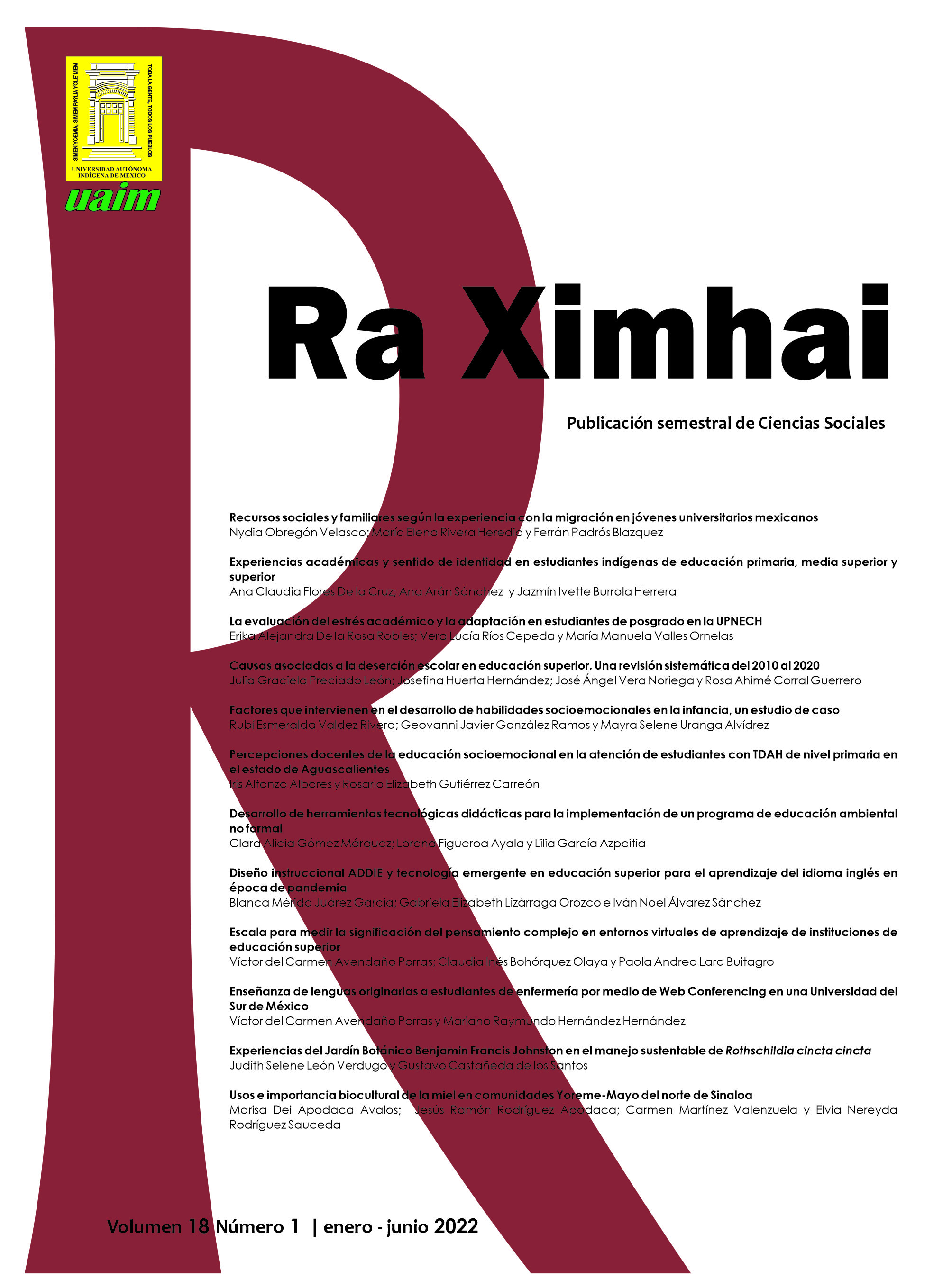Scale to measure the significance of complex thinking in virtual learning environments of higher education institutions
DOI:
https://doi.org/10.35197/rx.18.01.2022.09.vaKeywords:
pensamiento complejo, complejidad, entornos virtuales de aprendizaje, educación superior, tecnología educativaAbstract
The concept of complex thought in Higher Education Institutions has been little addressed and understood, since it is still in the intellectual imagination of educational actors that it is a theoretical construct with which problems of formal sciences can be solved, more not of the factual ones; If we add to this that during the Covid-19 pandemic Virtual Learning Environments had to be used with much greater intensity, the challenge of perceiving the concept and merging it with ICTs for the construction of meta-complex virtual environments turns out to be a challenge. The main objective of this document was to develop an instrument to measure the significance of complex thinking in Virtual Learning Environments in Higher Education Institutions; For this purpose, the instrumental methodology of Hernández (2011) was used, applying the validation of experts, using the focus group method, where a value of .77 was obtained, which is considered a good degree of validity. Reliability was also analyzed using Cronbach's Alpha, which showed a value of .780, which is why it is considered adequate. The questionnaire is made up of 63 items, 57 of which are integrated using a 4-level Likert scale; Therefore, it is considered to be a valid and reliable instrument. The instrument proposes to know precisely the relationship that exists between the concept of complex thought and virtuality and how these are merged by educational actors.
Downloads
References
Hernández, R. (2011). Instrumentos de recolección de datos en ciencias sociales y ciencias biomédicas. Universidad de Los Andes.
Morin, E (2007). Complejidad restringida y complejidad generalizada o las complejidades de la complejidad. Utopía y Praxis Latinoamericana, 12 (38), 107-119.
Nowotny, H. (2003). Democratising expertise and socially robust knowledge. Science and Public Policy, 30(3), 151-156.
Vygotsky, L. (1987). Imaginación y creación en la edad escolar. La Habana: Editorial Pueblo y Educación.
Nascimento, L; y Rodríguez, I. (2018). La lectura hipertextual como caso del modo de pensar complejo. Revista Ciencias Pedagógicas e Innovación, 6(2), 37-45.
Nilsook, P; y Wannapiroon, P. (2014). International distance consulting via web conferencing. International Journal of Emerging Technologies in Learning, 9 (4), 60-64.
Arboleda, A. (2018). La escuela bajo los preceptos de la teoría del caos: Incertidumbre, caos, complejidad, lógica difusa y bio aprendizajes. Revista Internacional de Educación y Aprendizaje, 6(1), 1-9.
Fenwick, T. (2010). Re-thinking the “thing” sociomaterial approaches to understanding and researching learning in work. Journal of workplace learning, 22(1/2), 104-116.
Terrones, A. (2018). Pensamiento dominante, educación y medios de comunicación. Sophia, Colección de Filosofía de la Educación, (24), 313-336.
Moyano, V; Sandoval, J; y Patiño, E. (2018). El pensamiento complejo desde la enseñanza de la Lógica Matemática. Roca: Revista Científico-Educaciones de la provincia de Granma, 14(4), 169-181.
Dewey, J. (1904). The educational situation, No. 3. Chicago: University of Chicago Press.
Morin, E. (2000). La mente bien ordenada. Barcelona: Seix Barral.
Romero, C. (2003). Pluralismo, multiculturalismo e interculturalidad. Educación y Futuro: Revista de Investigación Aplicada y Experiencias Educativas, (8), 11-20.
Barroso, E. (1991). Respuesta educativa ante la diversidad. Salamanca: Amarú.
Estrada, A. (2018). Pensamiento complejo y desarrollo de competencias transdisciplinares en la formación profesional. Revista Científica RUNAE, 2(1), 177-193.
Flores, V. (2015). Metacognición y educación liberadora: “Componentes esenciales para la formación integral en educación primaria”. Dialógica: Revista Multidisciplinaria, 12(2), 4-17.
González, J., y Pazmiño, M. (2015). Cálculo e interpretación del Alpha de Cronbach para el caso de validación de la consistencia interna de un cuestionario, con dos posibles escalas tipo Likert. Revista Publicando, 2(1), 62-67.
Downloads
Published
How to Cite
Issue
Section
License
Copyright (c) 2022 Víctor del Carmen Avendaño Porras, Claudia Inés Bohórquez Olaya, Paola Andrea Lara Buitagro

This work is licensed under a Creative Commons Attribution-NonCommercial 4.0 International License.
Usted es libre de:
- Compartir — copiar y redistribuir el material en cualquier medio o formato
- Adaptar — remezclar, transformar y construir a partir del material
- La licenciante no puede revocar estas libertades en tanto usted siga los términos de la licencia
Bajo los siguientes términos:
- Atribución — Usted debe dar crédito de manera adecuada , brindar un enlace a la licencia, e indicar si se han realizado cambios . Puede hacerlo en cualquier forma razonable, pero no de forma tal que sugiera que usted o su uso tienen el apoyo de la licenciante.
- NoComercial — Usted no puede hacer uso del material con propósitos comerciales .
- No hay restricciones adicionales — No puede aplicar términos legales ni medidas tecnológicas que restrinjan legalmente a otras a hacer cualquier uso permitido por la licencia.








